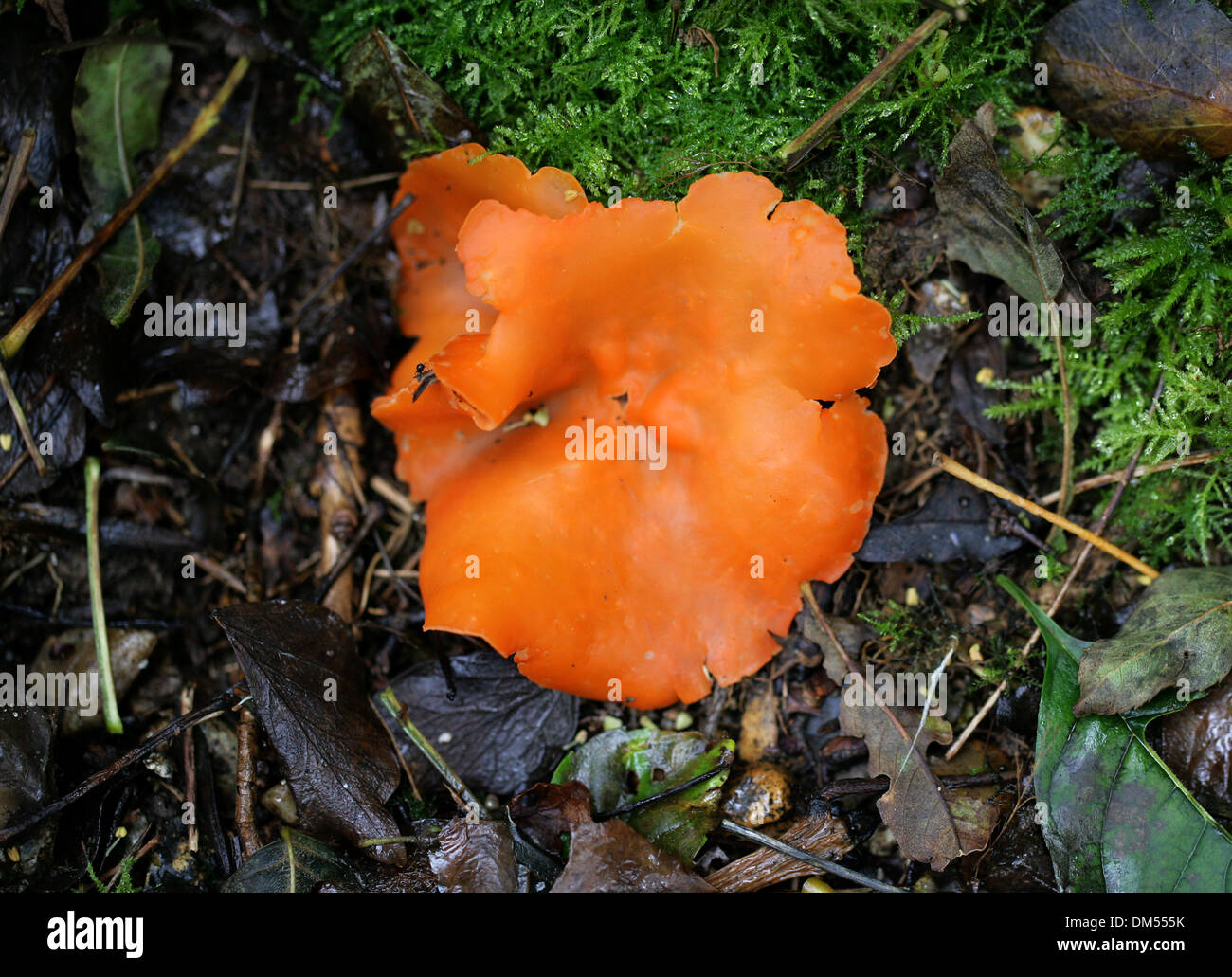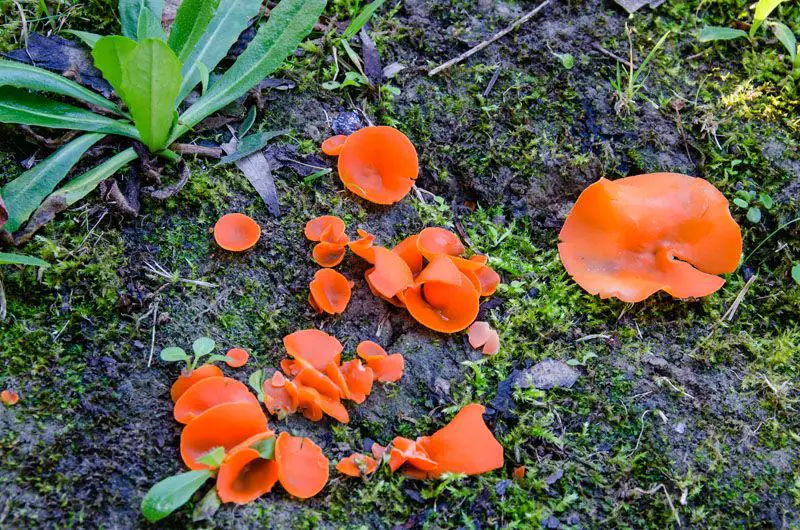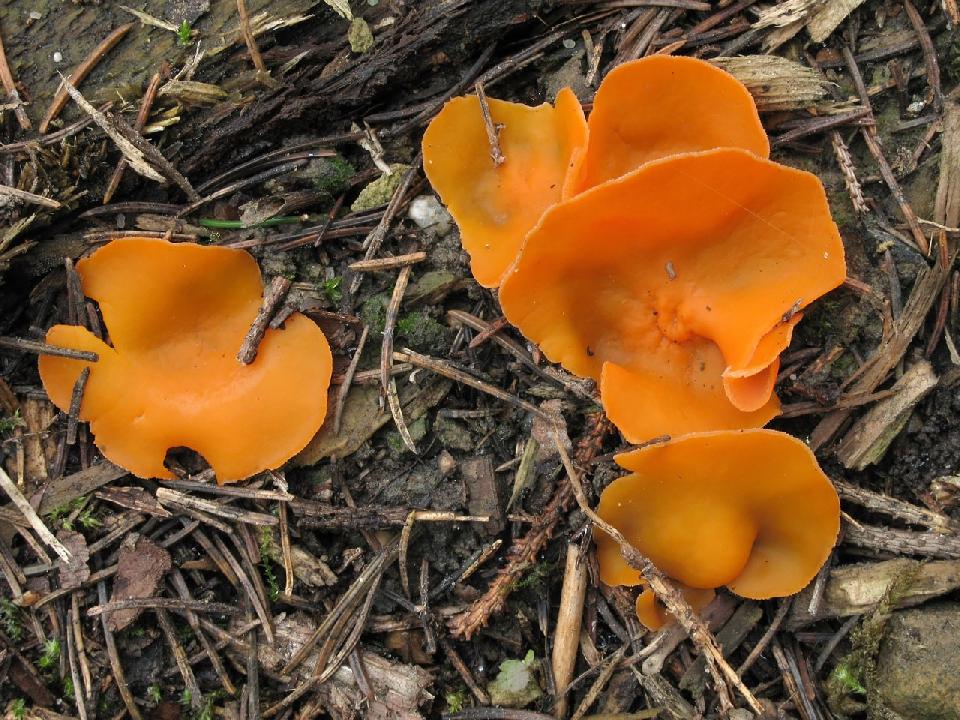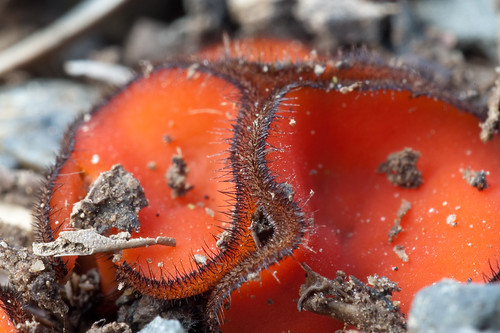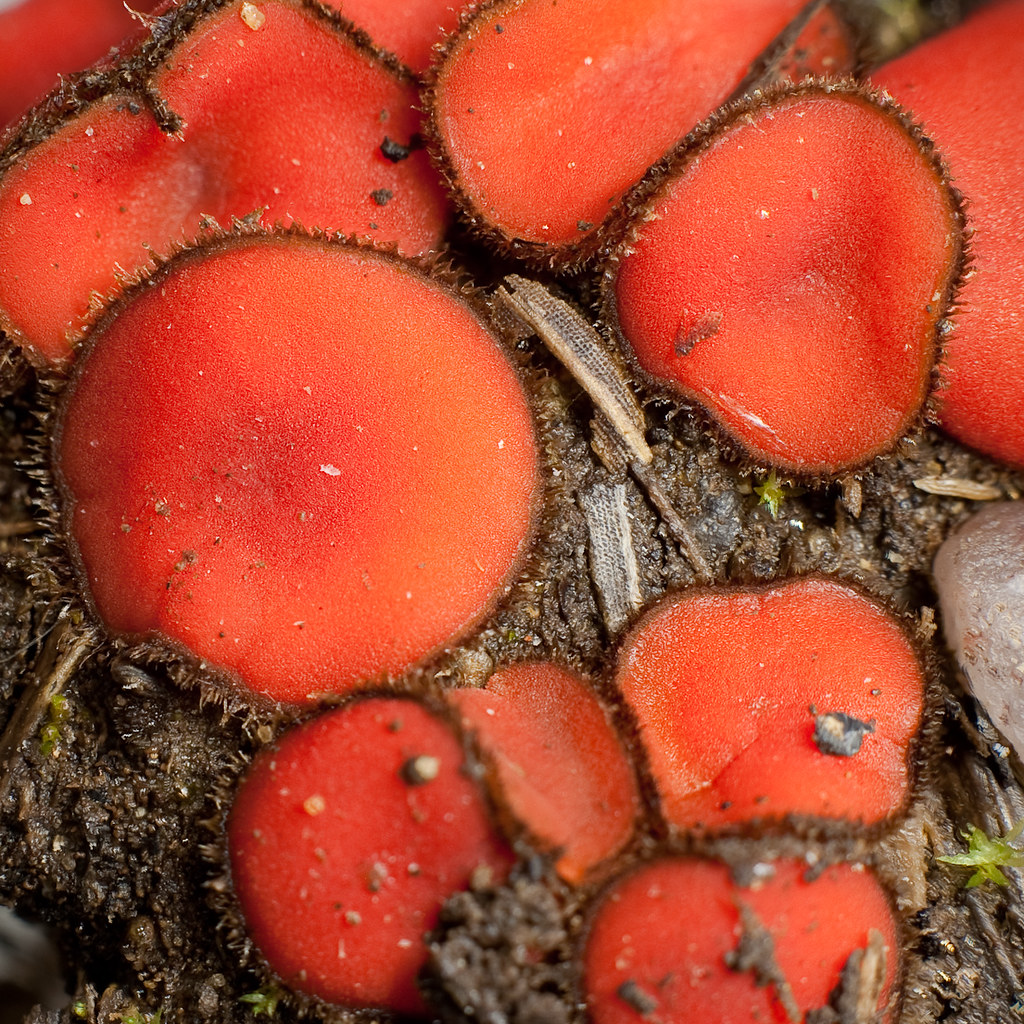Pyronemataceae
Orange Red mug Ling ( Aleuria aurantia )
The fire pillow relatives ( Pyronemataceae ) constitute by far the largest family in the order of the cup -like Ling ( Pezizales ) within the Department of Ascomycota. It includes 80 genera with over 660 species and represents about half of all types of their order. Recent phylogenetic studies indicate that the family is polyphyletic presently described.
Features
The fire pillow relatives constitute the largest family of the order of the cup -like Ling, whereby they may be very different in form and appearance. The apothecium may be pedunculated or sessile, cup - to disc-shaped, cushion- shaped or coiled. Even underground, truffle -like fruiting bodies are known. The Apotheciengröße varies between <1 mm and 12 cm in diameter. You can be vividly colored by carotenoid pigments. There is no common morphological feature within the family, why were attempts by several authors to now, they split into several families.
Ecology and distribution
The species of the family are mainly distributed in temperate to arctic-alpine regions, a few species also occur in the tropics. Ecologically a variety of substrates are colonized, they live both on the ground and on dung, wood, fire places, urine or mosses. The majority live saprobiontisch, but the nutritional strategy of most species is still insufficiently researched. Several genera are considered moss parasites, but also Ektomycorrhiza formers are documented.
Taxonomy
Perry and authors (2007 ) studied the Pyronemataceae phylogenetically and confirmed the hypothesis that they do not form a monophyletic unit. Nevertheless, the majority was within a single clade, which was, however, statistically sound weak. Overall, they are divided into 14 clades, the former family Ascodesmidaceae is clearly a monophyletic clade within the Pyronemataceae. Nevertheless, the existing data are not yet sufficient to divide the family into several families. The families jelly ball relatives ( Sarcosomataceae ) and chalice cup Ling relatives ( Sarcoscyphaceae ) were confirmed as an independent sister families of Pyronemataceae.
Genera
The following species list is based on " Outline of Ascomycota ". Not yet included are the three genera of the former family Ascodesmidaceae Ascodesmis, Eleutherascus and Lasiobolus:
Acervus, Aleuria, Aleurina, Anthracobia, Aparaphysaria, Arpinia, Ascocalathium, Ascosparassis, Boubovia, Byssonectria, Boudierella, Chaetothiersia chalazion, Cheilymenia, Cleistothelebolus, Dictyocoprotus, Eoaleurina, Galeoscypha, Genea, Geneosperma, Geopora, Geopyxis, Gilkeya, Hiemsia, Humaria, Hydnocystis, Hypotarzetta, Jafnea, Kotlabaea, Lamprospora, Lasiobolidium, Lathraeodiscus, Lazuardia, Leucoscypha, Luciotrichus, Melastiza, Miladina, Moravecia, Mycogalopsis, Nannfeldtiella, Neottiella, Nothojafnea, Octospora, Octosporella, Orbicula ( unsafe assignment), Otidea ( with synonyms and Otideopsis Flavoscypha ) Oviascoma, Parascutellinia, Paratrichophaea, Paurocotylis, Petchiomyces, Phaeangium, Pseudaleuria, Pseudombrophila, Psilopezia, Pulvinula, Pyronema, Pyropyxis, Ramsbottomia, Rhizoblepharia, Rhodoscypha, Rhodotarzetta, Scutellinia, Smardaea, Sowerbyella, Sphaerosoma, Sphaerosporella, Spooneromyces, Stephensia, Tarzetta, Tricharina, Trichophaea, Trichophaeopsis, Warcupia, Wenyingia, Wilcoxina


